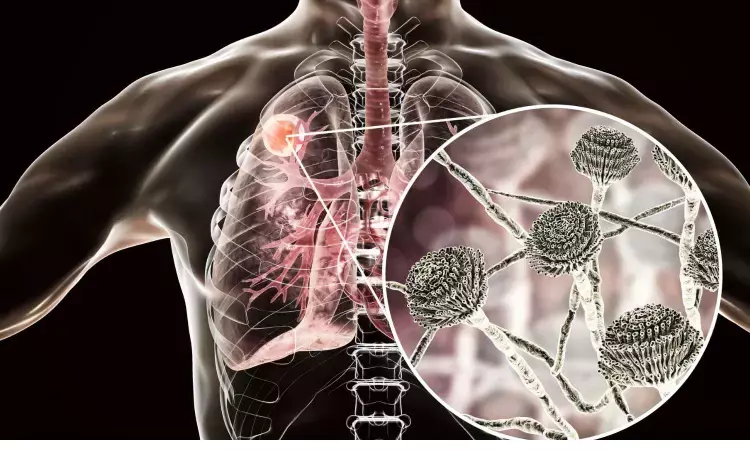- Home
- Medical news & Guidelines
- Anesthesiology
- Cardiology and CTVS
- Critical Care
- Dentistry
- Dermatology
- Diabetes and Endocrinology
- ENT
- Gastroenterology
- Medicine
- Nephrology
- Neurology
- Obstretics-Gynaecology
- Oncology
- Ophthalmology
- Orthopaedics
- Pediatrics-Neonatology
- Psychiatry
- Pulmonology
- Radiology
- Surgery
- Urology
- Laboratory Medicine
- Diet
- Nursing
- Paramedical
- Physiotherapy
- Health news
- Fact Check
- Bone Health Fact Check
- Brain Health Fact Check
- Cancer Related Fact Check
- Child Care Fact Check
- Dental and oral health fact check
- Diabetes and metabolic health fact check
- Diet and Nutrition Fact Check
- Eye and ENT Care Fact Check
- Fitness fact check
- Gut health fact check
- Heart health fact check
- Kidney health fact check
- Medical education fact check
- Men's health fact check
- Respiratory fact check
- Skin and hair care fact check
- Vaccine and Immunization fact check
- Women's health fact check
- AYUSH
- State News
- Andaman and Nicobar Islands
- Andhra Pradesh
- Arunachal Pradesh
- Assam
- Bihar
- Chandigarh
- Chattisgarh
- Dadra and Nagar Haveli
- Daman and Diu
- Delhi
- Goa
- Gujarat
- Haryana
- Himachal Pradesh
- Jammu & Kashmir
- Jharkhand
- Karnataka
- Kerala
- Ladakh
- Lakshadweep
- Madhya Pradesh
- Maharashtra
- Manipur
- Meghalaya
- Mizoram
- Nagaland
- Odisha
- Puducherry
- Punjab
- Rajasthan
- Sikkim
- Tamil Nadu
- Telangana
- Tripura
- Uttar Pradesh
- Uttrakhand
- West Bengal
- Medical Education
- Industry
Novel robotic bronchoscope system may aid in early lung cancer diagnosis, reveals Lancet study

China: Researchers have devised a novel robotic bronchoscope system that can non-intrusively access the area of interest within the lung for minimally invasive pulmonary lesions sampling, the gold standard of lung cancer diagnoses. This research was published on Mar. 15 in Cyborg and Bionic Systems.
This will aid in early lung cancer diagnosis for timely treatment and better prognoses.
Cancers are notoriously known for their high mortality rate and increasing incidence worldwide. Among them, lung cancer is arguably one of the most devastating ones. According to the World Cancer Research Fund International, lung cancer was the second most common cancer worldwide in 2020, with more than 2.2 million new cases and 1.8 million deaths.
However, lung cancer, like other cancers, is easier to treat if caught earlier. “The reported 1-year survival rate for stage V is just 15% to 19% compared with 81% to 85% for stage I, which means that the early differentiation of benign and malignant pulmonary nodules can effectively reduce mortality.” Said Xingguang Duan, a scientist from the School of Medical Technology, Beijing Institute of Technology.
“Imagine inserting a long thin line into your mouth, through your airway to cut a little part of the lesion of interest within your lung. After that, this thin line returns the cut sample for further examination to determine whether it’s benign or malignant.” Said study authors, “This is what the bronchoscope system was designed for. Our end effector is just like a thin line. This line must first be thin enough to cross the trachea and bronchus.”
“Moreover, it must be able to bend, rotate and translate to flexibly navigate the complex airway network.” explained Changsheng Li, the corresponding author of this research, from School of Mechatronical Engineering, Beijing Institute of Technology.
“Another problem is that you can’t see the end effector of this line through the patient’s chest. However, to accurately approach the lesion of interest, the position and pose of the end effector must be determined in real-time.” said study authors. They addressed this problem by developing a navigation system, which attaches an endoscope and two electromagnetic sensors to the end effector, which enables online positioning for navigation and provides visual information for doctors to diagnose and sample.
The navigation system also reconstructs a three-dimensional virtual model based on computed tomography for robotic path planning, provided with the choice of the target area. Combining the flexible end effector and the navigation system, the robotic bronchoscope system can automatically reach the target lesion and provide intraoperative visual guidance for biopsy sampling.
They verified the feasibility of this robotic bronchoscope system via an ex vivo navigation-assisted intervention experiment. “During the experiment, the position displayed by the third perspective of the virtual endoscope is consistent with the position of the end effector’s tip relative to the airway phantom from visual observation. The virtual endoscope view also matches with the real video acquired by the endoscope module as expected,” said Li.
“Although the system has achieved promising bronchoscopy performance, as a medical device, there are still some issues that limit the clinical application and promotion,” explained study authors, “First of all, the more convenient maneuver is required for surgeons to readily learn and use; Second, high-resolution endoscopic view is required; Finally, the calibration between virtual and actual environments is still time-consuming and unfriendly to the novice.”
In the future, they will focus on minimizing the diameter of the end effector and adopting replaceable modules for diverse surgical requirements, exploring joint control to allow the robot a more flexible movement in the airway, and adopting computer vision algorithms to realize automatic and intelligent calibration.
Reference:
Duan Xingguang Xie Dongsheng Zhang Runtian Li Xiaotian Sun Jiali Qian Chao Song Xinya Li Changsheng . A Novel Robotic Bronchoscope System for Navigation and Biopsy of Pulmonary Lesions. Cyborg Bionic Syst. 4;2023:0013. DOI:10.34133/cbsystems.0013.
Dr Kamal Kant Kohli-MBBS, DTCD- a chest specialist with more than 30 years of practice and a flair for writing clinical articles, Dr Kamal Kant Kohli joined Medical Dialogues as a Chief Editor of Medical News. Besides writing articles, as an editor, he proofreads and verifies all the medical content published on Medical Dialogues including those coming from journals, studies,medical conferences,guidelines etc. Email: drkohli@medicaldialogues.in. Contact no. 011-43720751


